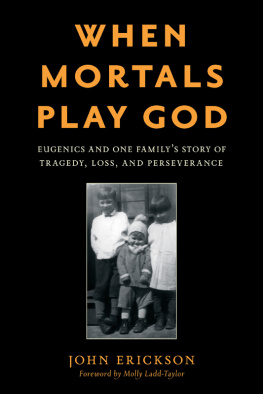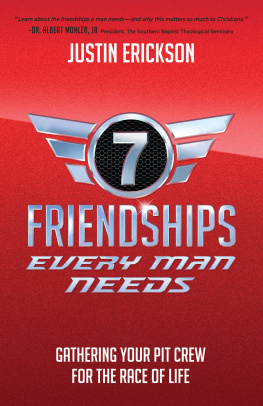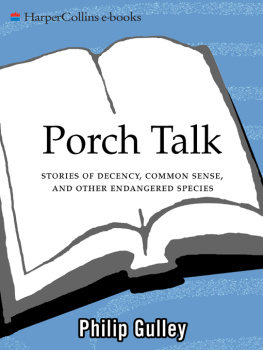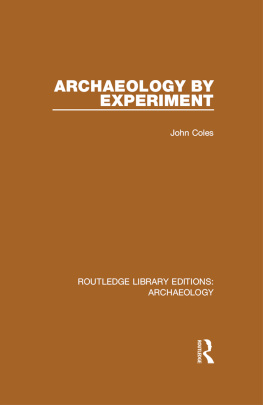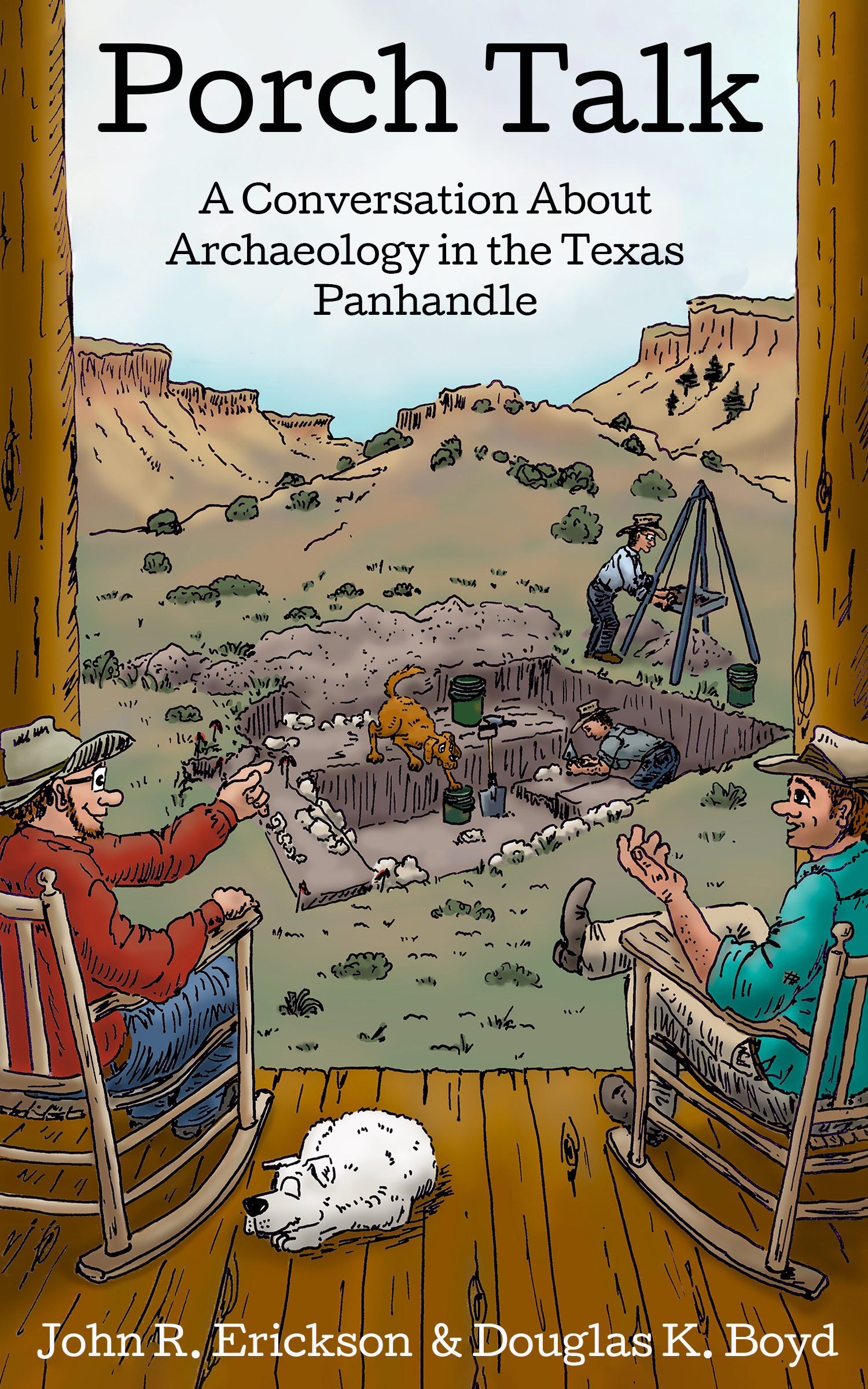Porch Talk

Porch Talk
A Conversation About Archaeology in the Texas Panhandle
John R. Erickson
& Douglas K. Boyd
Texas Tech University Press
Copyright 2022 by John R. Erickson and Douglas K. Boyd
All rights reserved. No portion of this book may be reproduced in any form or by any means, including electronic storage and retrieval systems, except by explicit prior written permission of the publisher. Brief passages excerpted for review and critical purposes are excepted.
This book is typeset in EB Garamond. The paper used in this book meets the minimum requirements of ANSI/NISO Z39. 48-1992 (R1997).
Designed by Hannah Gaskamp
Cover and interior illustrations by Nicolette G. Earley, in the style of Gerald L. Holmes
Library of Congress Cataloging-in -Publication Data
Names: Erickson, John R., 1943 author. | Boyd, Douglas K. (Douglas Kevin, 1959) author. Title: Porch Talk: A Conversation about Archaeology in the Texas Panhandle / John R. Erickson and Douglas K. Boyd. Other titles: Conversation about Archaeology in the Texas Panhandle.
Description: Lubbock, Texas: Texas Tech University Press, 2022. | Audience: Ages 911 | Audience: Grades 46 | Summary: A rancher and an archaeologist are curious about the ancient peoples who lived on the Texas PanhandleProvided by publisher.
Identifiers: LCCN 2021050013 (print) | LCCN 2021050014 (ebook) |
ISBN 978-1 - 68283-122 -9 (paperback) | ISBN 978-1 - 68283-129 -8 (ebook)
Subjects: LCSH: Indians of North AmericaTexasTexas PanhandleAntiquitiesJuvenile literature. | Indians of North AmericaGreat PlainsJuvenile literature. | Excavations (Archaeology)TexasTexas PanhandleJuvenile literature. | Texas Panhandle (Tex.)AntiquitiesJuvenile literature.
Classification: LCC E78.T4 E75 2022 (print) | LCC E78.T4 (ebook) | DDC 976.4/8dc23/eng/20211102
LC record available at https://lccn.loc.gov/2021050013
LC ebook record available at https://lccn.loc.gov/2021050014
Printed in the United States of America
22 23 24 25 26 27 28 29 30 / 9 8 7 6 5 4 3 2 1
Texas Tech University Press
Box 41037
Lubbock, Texas 79409-1037 USA
800.832.4042
ttup@ttu.edu
www.ttupress.org
This book is dedicated to all the people who lived on this land before us, and to all the
people who want to learn more about those who came before us.

Contents
Illustrations
Figure 1: West Pasture story archaeologists
Figure 2: Archaeologists on the Ericksons front porch at the M-Cross Ranch
Figure 3a: Arrow point chart
Figure 3b: Replica of a Washita arrow point used by Plains Villagers in the Texas Panhandle
Figure 4: Topographic relief map of the Panhandle Plains
Figure 5a, b, c: Bison-hunting tools: Washita arrow point, beveled knife, and end scraper
Figure 6a, b: Bone tools found in Plains Village sites
Figure 7: Sketch of the Dykema burial found in the West Pasture in 1998
Figure 8a, b: Plan drawing of Hanks House excavation
Figure 9a, b: Photographs of Hanks House floor
Figure 10: Geoarchaeologist Charles Frederick standing next to a backhoe trench
Figure 11: Map of West Pasture valley showing the ages of various unique landforms
Figure 12: Graph comparing 4,000 years of rainfall, bison, and people in the Texas Panhandle
Figure 13: Sand dunes encroaching on a farmhouse during the Great Depression
Figure 14a: Regional map, West Pasture and surrounding Plains Villageperiod culture areas
Figure 14b: Regional map of important Plains Village sites
Figure 15: Magnetometer map showing a buried pit-house anomaly at the Three Toes site
Figure 16a, b: Remote sensing surveys at West Pasture sites
Figure 17: Photograph of the etched rib
Figure 18a, b: Photographs of the Ericksons ranch house before and after the Perryton Fire
Figure 19: Archaeologist holding a large piece of burned daub
Figure 20: Computer image model of Drovers House earth lodge
Figure 21: Underground storage pit found near Hanks House
Figure 22: Painting of a dog harnessed to a travois sled
Figure 23: Drawing of an Olivella bead
Figure 24a, b, c, d, e: Pottery sherds found at West Pasture sites
Figure 25: Logo of the nonprofit group Plains Archeological Research
Introduction by John Erickson
Educators Guide reference: Activity 1
I am an amateur archaeologist with no professional credentials, but Ive become the custodian of a ghost town that dates to around AD 1300. Its located on my ranch in Roberts County, Texas, and it might have been occupied for fifty or a hundred years. We dont know. Theres a lot we dont know.
Compared to towns of the historic era, it wasnt muchjust a sprawl of widely spaced pit-houses that occupied an area of 300 acres in my West Pasture. We can only guess how many people lived there, but it was a place where babies were born and the elderly died and were buried. Women nursed children, made cornmeal in stone metates, and stitched clothes of leather while the men hunted bison with arrows tipped with points made from Alibates flint.
Maybe they sang while they worked and told stories to their children on long winter nights. Surely they spent a lot of time looking at the vastness of the starry space above them and wondered about the mystery of their existence.
This book is a conversation between me and my friend Doug Boyd, a professional archaeologist. Its the kind of conversation we might have on the porch after a day of work in the field. For more than twenty years, we have worked together on prehistoric sites and shared a fascination for the people who occupied them.
Our hope in writing this book is to ignite your curiosity and to make you aware of the brave and sturdy people who occupied this land long before we got here.
Well try to strike a balance between, say, a Hank the Cowdog book that gives you laughter and entertainment and a book of scientific facts that you might find hard to read. If we spend too much time on the science, you might not read the book, but if we dont bring in some of the history of archaeology, you wont learn much.
Im the storyteller in this venture: the landowner, the guy who walks around the ranch looking for evidence of human presence, the amateur who tries to imagine who those people were. Doug Boyd is the scientist who brings professional training and discipline to the conversation. I have learned a great deal from him, and I hope you can too.


Introduction by
Douglas K. Boyd
Educators Guide reference: Activity 1
I am a professional archaeologist with two degrees and over forty years experience investigating archaeological sites in Texas and surrounding states. In my day job, Im whats called a contract archaeologistwhich is kinda like a gun for hire: have trowelwill travel. ( Have Gun Will Travel was name of an old Western radio show and television series in the 1950s and 1960s. You younger folks may have to ask your parents or grandparents about this.)



